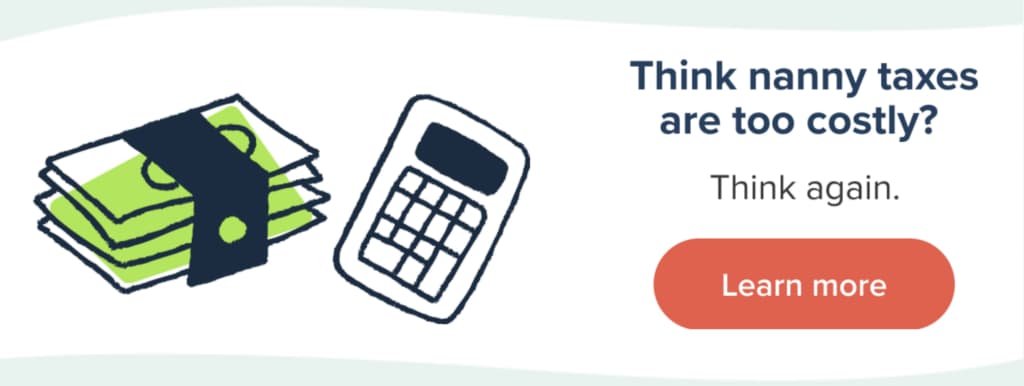When families hire a nanny, they’re often doing so with the primary objective being to find the perfect caregiver for the job. This is perfectly understandable, but according to a new survey polling 1,000 families with full-time and part-time nannies, there are several items related to the nanny’s pay, the family’s taxes and the overall cost to hire the nanny that are commonly misunderstood or unknown. Below are six key findings that show the value of consulting with a trusted expert before a nanny begins working in your home.
1. COVID-19 has put an emphasis on the need for legal pay
Of the families surveyed, 81% believe during COVID19, government protections like disability, sick leave and unemployment insurance are essential for caregivers. These benefits, however, are not available to nannies and senior caregivers when they’re paid under the table, and 66% of families are not aware of this.
2. A discussion about legal pay is needed between families and caregivers during the hiring process
Of families surveyed, 76% say they pay their caregivers under the table via check, cash or electronic transfer, and 39% say it’s because their caregiver requested it. However, 32% of families say they would pay on the books if that was their caregiver’s preference. And with 52% of families believing their caregiver has a high understanding about tax rules and regulations governing their work, there is opportunity for both parties to benefit from consulting with our household employment specialists before work begins.
3. Too many nannies are being treated as independent contractors instead of employees
According to the survey results, 35% of families believe their in-home child care worker is an independent contractor rather than a household employee. Based on the current definitions set by the IRS and the Department of Labor, independent contractors are self-employed workers operating their own business and providing services to the general public. A nanny almost never fits this description because they’re only working for one, maybe two families at a time, their job is assumed to be continuous and they cannot claim to operate at a profit or loss like a business would.
4. A high number of families believe nanny taxes are more expensive than they really are
A family’s household employment tax liability can vary by where they live, but is roughly 10-15% on top of their caregiver’s wages. And this figure comes before tax breaks are applied to reduce their costs. However, 46% of families believe the tax increase from paying on the books is more than 20%. This misunderstanding is easily fixed by using a resource like our nanny tax calculator or reaching out to HomePay for a consultation when it’s time to hire.
5. Families are missing out on opportunities to save money
The biggest tax savings families can currently utilize is a Dependent Care Account, but only 26% of families surveyed say they use it. The Child Care Tax Credit is another option available to families, but only 25% say they took it last year or plan to take it this year. It’s true that families need to be paying legally to be eligible for these tax breaks and there could be a shift coming toward that in 2021. Of families surveyed, 64% say they are aware that both of these tax breaks will increase with the passage of the American Rescue Plan and 56% say they support the increase.
6. There continues to be a need for specialized services like HomePay
According to the survey, 17% of families say they use a household employment specialist to pay their caregiver with 12% of them mentioning their caregiver requested to use a specific service. Overall, 45% of families surveyed say it would be easier to pay on the books if they had access to a service that specializes in household employment.
We understand that most people are not tax, payroll, labor law or human resources experts and that it takes time to fully understand what to do when hiring a nanny. That’s why our staff at HomePay consults with thousands of families every year to make sure they’re armed with the right information. Give us a call today and let’s have an honest discussion about your child care budget, how we can manage taxes and payroll for you and what you can expect to save in tax breaks by paying on the books.
HomePay tax, payments and compliance survey methodology
This sample of 1,000 adults (18 years or older) in the United States was surveyed between February 24, 2021, and February 28, 2021. All respondents are: (a) parents as verified by consumer data match, who (b) report paying for child care in the last year and, (c) report spending more than the $2,200 IRS threshold for reporting in-home care expenses and paying the nanny tax in 2020. The margin of error is 3.1% and no additional weighting was done to the initial sample. DKC Analytics conducted and analyzed this survey with a sample procured using the Pollfish survey delivery platform, which delivers online surveys globally through mobile apps and the mobile web along with desktop web.

